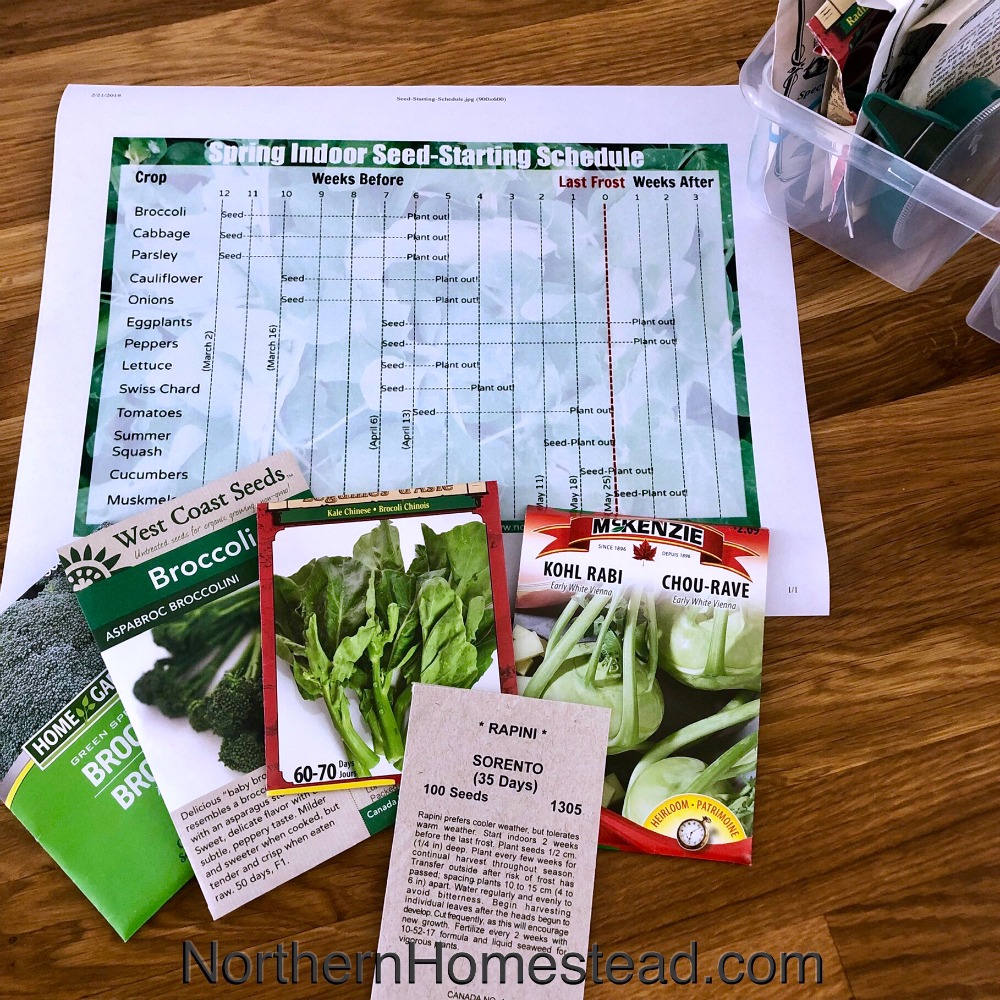
After using this spring indoor seed-starting schedule for annual vegetable seeds for several years now, do we still recommend it, or is it time for a new plan?
This spring indoor seed-starting schedule with a Free Printable is much more than just another printable schedule. We explain the reasons behind the dates and how to customize it. The article has a lot of information; once you get it, you will never depend on anyone else’s opinion. That’s what we want for you!
The schedule comes from the All New Square Foot Gardening book. The author, Mel Bartholomew, is known for simplifying things, which attracted me to his work. The schedule is very simple, and it is still all we use. We have adjusted it to our situation; more about that below.
In this article, we will examine when and why we start seeds according to this schedule. You can also print yourself a schedule with your exact dates and adjust it as needed.
Note: The free printable indoor seed starting schedule is at the end of this blog article.
How to find your Last frost date
You must know your last frost date for the spring indoor seed starting schedule. If you live in Canada or the USA, go to this link to find your last frost date.
All counting is based on that date. We start seeds indoors before the last frost date and plant them out before, at, or after that date.
The last frost date is important because some varieties grow well in cooler conditions and can be planted early, while others do not tolerate frost and should be planted after all danger of frost is gone.
To extend the growing season, we start tender seeds indoors before the conditions outdoors are right for them.
The indoor seed starting schedule tells us how long in advance seeds should be started.
Facts vs experience
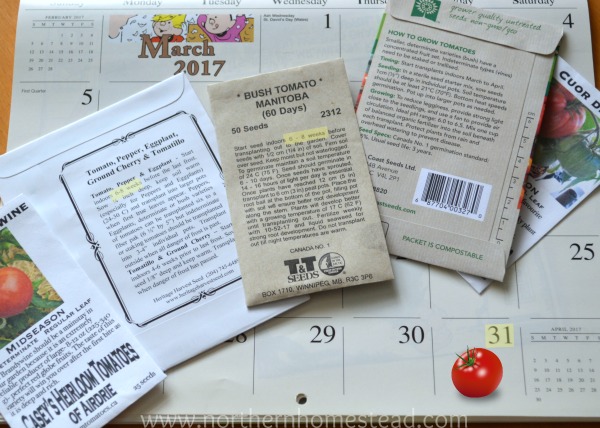
Every seed has a specific germination and growth rate. On average 2-10 weeks, depending on the variety, is enough to grow a healthy vegetable seedling. Some seed companies write these instructions on a seed package telling us when to start the seeds indoors (if applicable), when to plant them out, and how many days are expected to maturity (the number in parenthesis). These dates are facts, and they usually do not change from company to company, even though there are exceptions. We will look at one below.
The dates for a seed to germinate and grow into a healthy seedling, as well as the days to maturity, are perfect growing conditions days.
Many gardeners, though, still like to start seeds indoors very early. They have found that starting seeds up to five months before planting produces better results. The starting times differ greatly.
We, on the other hand, have years of good experience starting seeds later, never more than 10 weeks before planting.
Experience matters; following a schedule with very poor results does not help. However, if you understand the “why” behind an experience, you can change it. That is my goal in sharing this information.
It is a lot less work, caring for a seedling for 5 weeks vs 5 months. Personally, we would recommend growing an indoor garden, or at least some microgreens instead of starting seeds for the summer garden so early.
Understanding the growing conditions
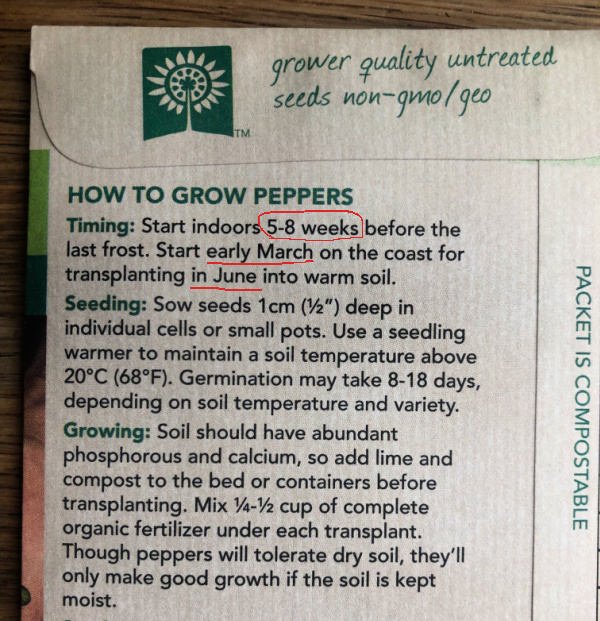
The picture above shows a pepper seed package from West Coast Seeds. It reads: “Start indoors 5-8 weeks before the last frost.” We just covered that. If you know your last frost day, count back 5-8 weeks, and you have your seed starting date.
But that’s not all the seed package says. The seed company, which is local to the West Coast and wants to be especially helpful to local growers, adds: “Start early March on the coast for transplanting in June into warm soil.” Now, the time period between early March and June is 13-14 weeks!
So, what now, is it 5-8 or 14 weeks? That’s a huge difference.
Here is where understanding the growing conditions and times to maturity comes in.
A pepper seed needs 5-8 weeks of perfect growing condition to become a healthy seedling. Since peppers are a heat-loving summer crop, those days should be preferably warm and sunny, with soil temperature for germination above 20C (68F).
The West Coast is known for its overcast, cool weather. An average gardener who starts pepper seeds there would have just enough sunny days between early March and the beginning of June to grow seedlings. All other days are basically lost days for that seedling; they do not count.
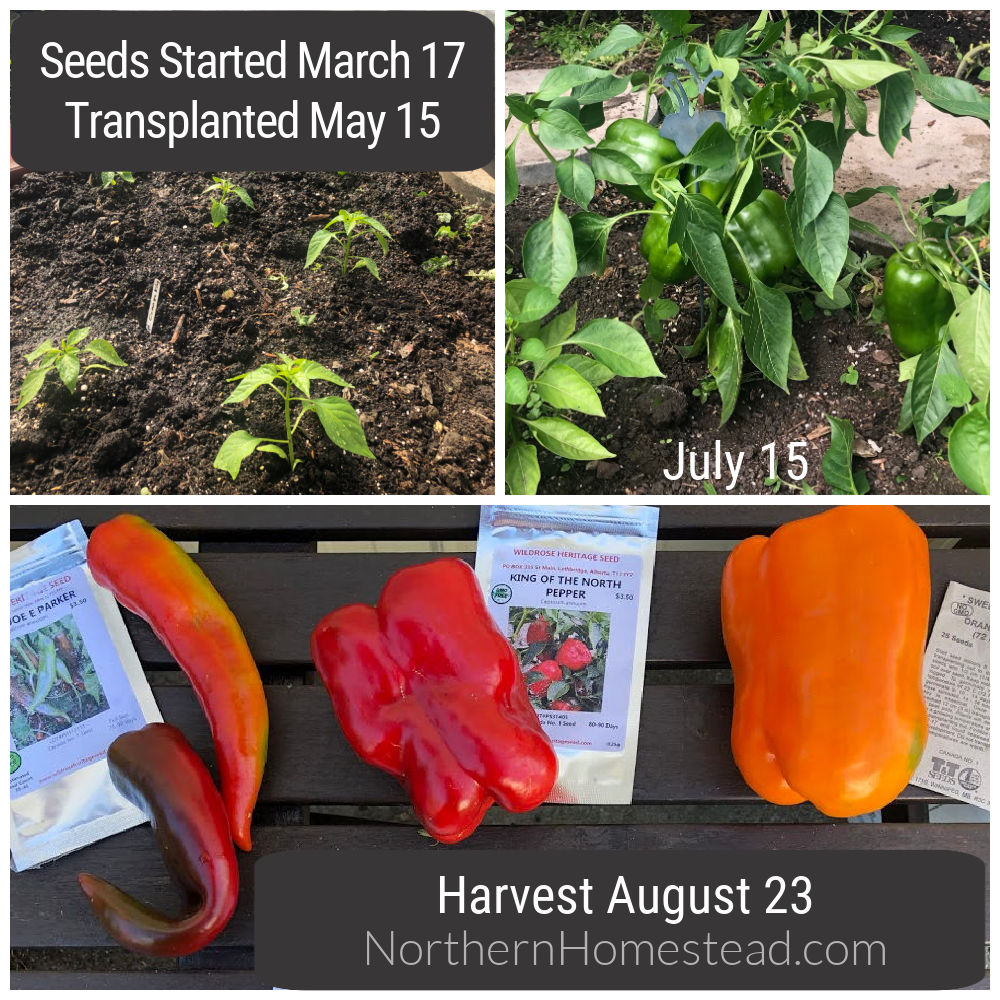
Here is an example of peppers that were started in March (eight weeks before being planted in a greenhouse) and harvested in August. How was that possible? We created the growing and maturing conditions that a heat-loving plant wants.
The times on the seed package for seed starting and days to maturity (the time from transplanting a seedling to harvest) are perfect growing condition times.
If you know that your growing conditions are not ideal for any given plant variety, you have two options: You can add more time, or you can create better conditions. We aim for the latter.
The spring indoor seed starting schedule also aims for perfect growing conditions and planting out dates.
What is special about the indoor seed-starting schedule?
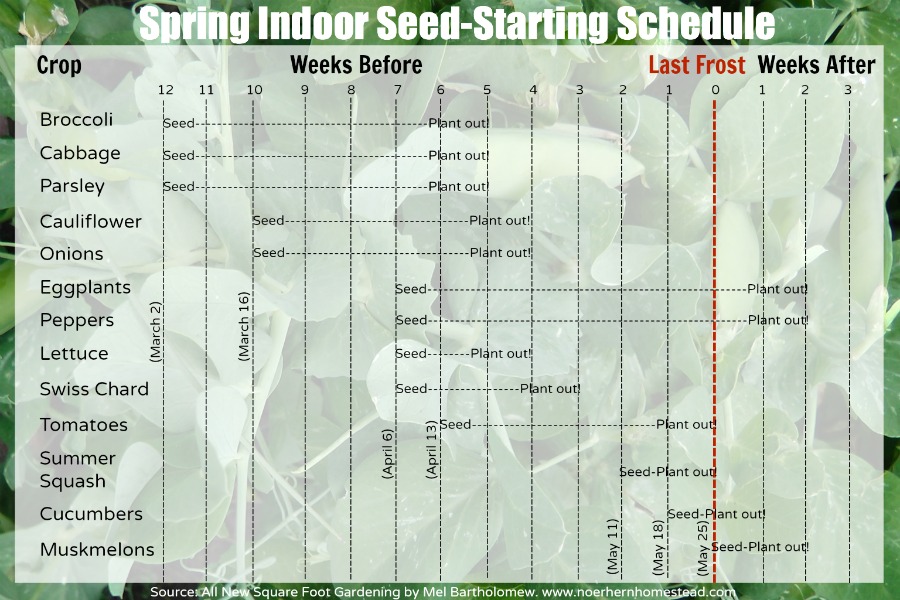
The indoor seed-starting schedule from the All New Square Foot Gardening book shows not only the seed-starting date but, even more importantly, the planting-out date. Those are really important dates to consider. The starting times are just simple math, counting back from the planting out time.
You can add any variety from your seed collection that is not on the schedule. For example, if the seed package says that the plant needs 10 weeks from seed to planting and can only be planted after all danger of frost is gone, you place your planting date a week after the last frost day, so it will surely not have frost. Now, you count 10 weeks back, and there you have your starting seed date.
If the planting out date on the schedule does not work for you, move the seed starting accordingly.
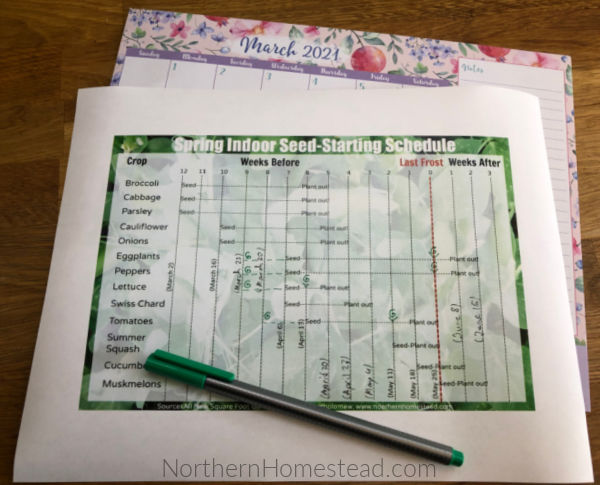
If you grow a greenhouse garden, you can adjust the seed starting times accordingly. It will take some practice to see how your greenhouse performs. A simple plastic poly gives you only about 3 degrees of protection at night. If you don’t use any heat source, you might want to wait with heat-loving plants till the last frost day, just like whiteout a greenhouse.
In our Geodesic Dome greenhouse, we use a car radiator to heat and cool the space. This allows us to plant about two weeks earlier than the last frost day (still watching the weather though).
Again, using the same idea, counting the seed starting back from the plant-out day, adjust the seed-starting date for a greenhouse to your situation. I simply add a “G” for the greenhouse to my schedule. Or you can print out two charts, one for the greenhouse and one for the garden.
Seed starting time for cold weather crops
Following this schedule, you will start cold-weather crops like brassicas and onions first. They can also be planted out first, as cold-weather crops generally like cool weather. As we have mentioned before, this schedule gives you a starting time and a plant-out time.
Cold-weather crops can withstand some frost, but you must still monitor the weather and provide them with a frost blanket as needed. See also how different plants survive frost.
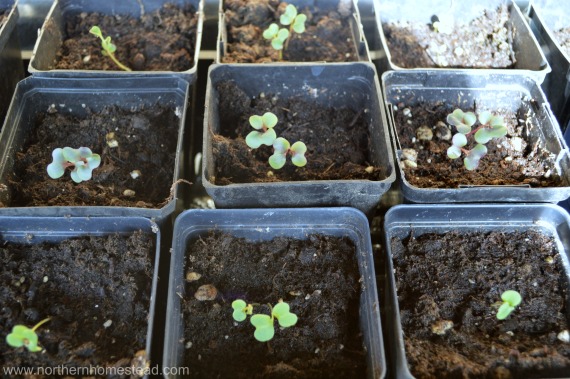
The advantage of planting cold-weather crops out earlier is to prolong your growing season, but also while cold-weather crops do like it cool and often will grow better in cooler conditions. Also, the cabbage butterflies tend to come out in late summer, so harvesting the broccoli before that is a win-win.
Since our weather is very unpredictable, and I never really know what our early spring will be like, I have moved the schedule for the cabbage family plants about 2-4 weeks later. This gives me a bit more time if our spring does not come at the usual time as expected, and I get better results.
Another good option is to start cold-weather crops on schedule but in winter sowing instead of indoors. This way, they are already out in the elements and will germinate according to the weather.
Not all plants we might grow are on the chart, only the main crops from a plant family. So if you also grow Brussels sprouts and shallots, start them with other brassicas or onions. Compare the seed starting and planting out dates on your seed package and add them where you see fit.
Seed starting time for nightshade family plants
Nightshade family plants, such as tomatoes, peppers, and eggplants, are summer crops that like bright and warm weather. In our area, the daylight hours from October 28 to February 14 are below 10.
If you start your seeds before or right at the edge of the 10-hour day, they will grow very slowly and there is a danger that they become spindly. Spindly and weak seedlings, for the most part, are no good. They do recover after being transplanted, but that takes time, precious time that a short-growing season gardener does not have.
You can use a grow light to avoid having spindly seedlings, but then your seedlings will grow fast and overgrown. Read more about starting seeds without grow lights here.
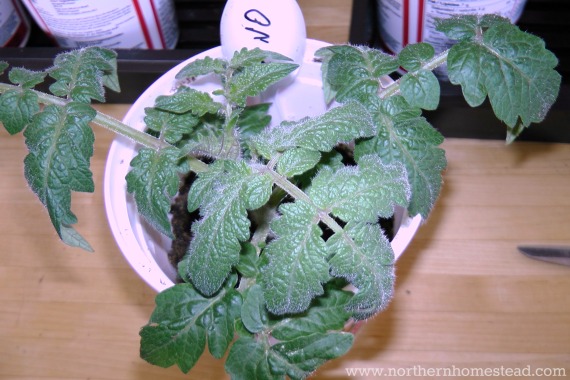
Some plants do need longer to germinate, so, for example, start ground cherries earlier.
Remember, the important date is the planting out day on the schedule, it is what we are aiming for. If you are not sure about the weather, start a week or two later; in this case, if you have to wait longer, the seedling will not overgrow.
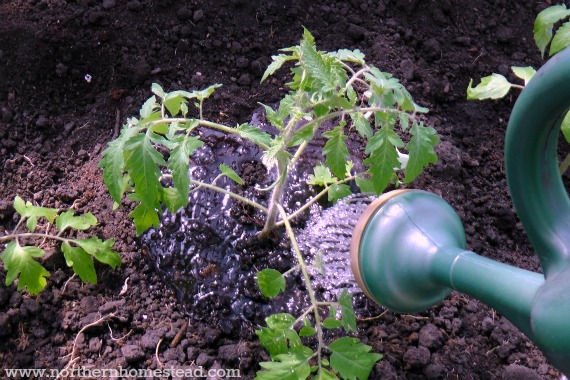
Seedlings at a stage where they are almost putting forth buds are just right. The roots are still young and will adapt easily to the new location, and the plant is ready to grow and produce a lot of fruit. Read more about when to start tomatoes here.
If you can’t wait, start a plant or two early and give it the best conditions possible indoors. This way you can have really early tomatoes. Read more about growing tomatoes indoors.
Peppers and eggplants are particularly heat-loving, eggplants even more than peppers. Do not rush planting them out, ensuring all danger of frost is over.
Seed starting time for cucurbits family plants
Cucurbits are squash, zucchini, cucumber, pumpkin, and other members of the squash family. Most of them are very fast-growing plants, and they, too, like summery, bright, and warm conditions. They also don’t care much about being transplanted. If you want or need to start them indoors, give them a bigger pot (4-6 inches), and do not start too early.
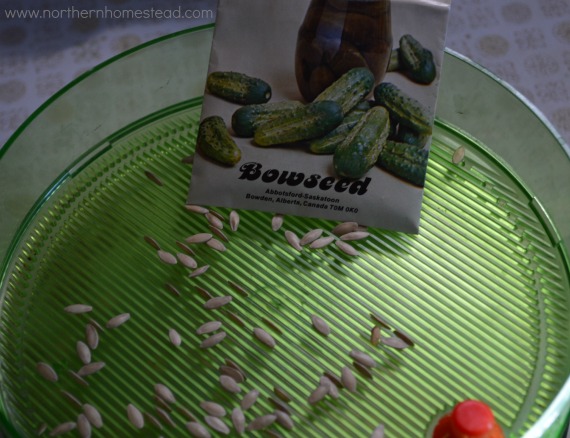
We start spaghetti squash and winter squash indoors and wait to plant them out a week or two after the first frost. We mostly just start zucchini in the garden directly, even though starting indoors is a better idea during cool springs (and we never know ahead of time what spring will be like).
Cucumbers can be sprouted to give them a head start and planted directly into the garden or greenhouse.
Free printable seed starting schedule
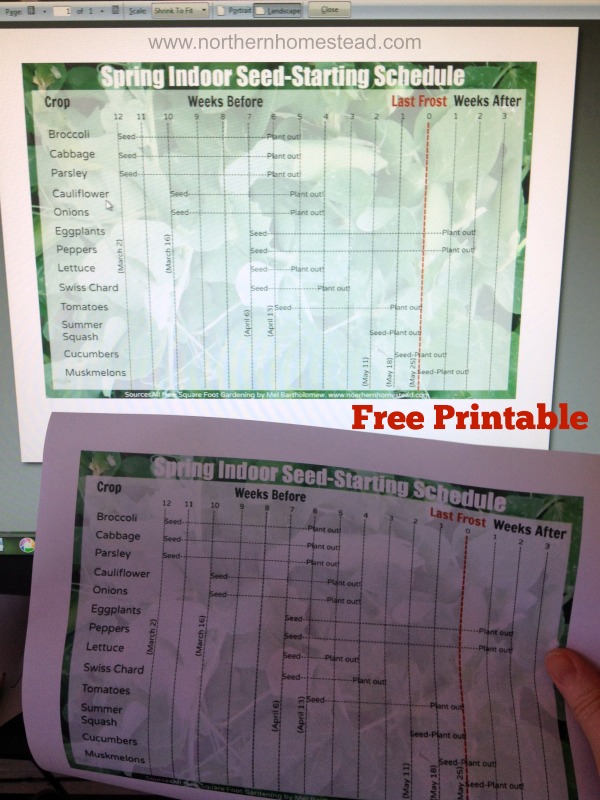
Here, you can print out your own indoor seed-starting schedule. We have two pictures to choose from.
To print out the schedule, click on one of the pictures below to open it in full size. Then, you can print or save it on your device. It is free to print.
This is the picture without dates. If your last frost date is different from ours, you can make your own. Write your dates into the schedule, counting back from your last frost day.
If your last frost dates are the same as ours, choose the second picture with the dates on it.
Happy spring seed starting!
We invite you to subscribe to Northern Homestead and follow us on Instagram, Facebook, or Pinterest for the latest updates.

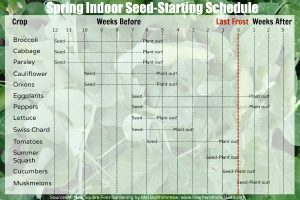
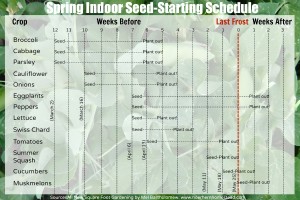
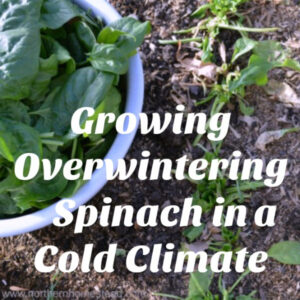
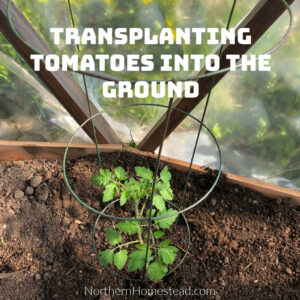
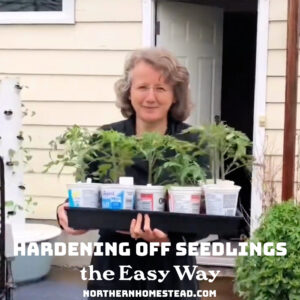
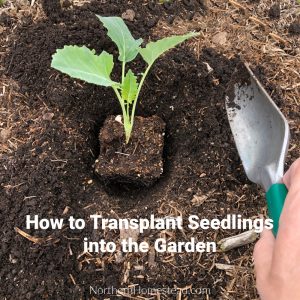
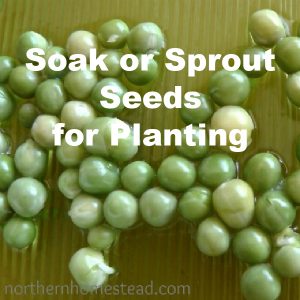
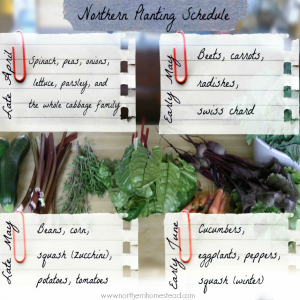
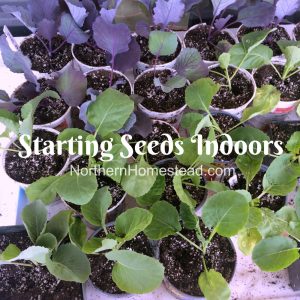
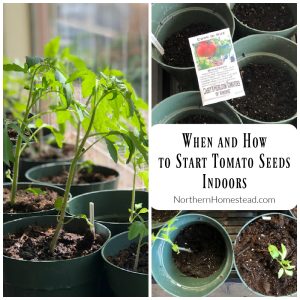
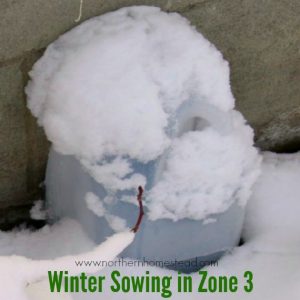
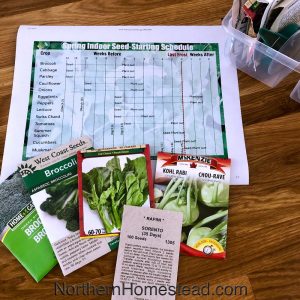

Hi there, I also live near Edmonton! Thanks for the informative post. I’d like to know how you’re able to plant things outside 4-6 weeks before our final frost? Our garden ground is usually pretty frozen and/or soggy at that time. Do you mean planting out in the greenhouse, or are you using raised beds or other tricks?
Also, I wondered if you would also seed radishes well ahead of the final frost date, as the other Brassicas? I liked your comment about harvesting broccoli before the cabbage moths get them- I have in the past seeded them late to take advantage of cooler fall weather with mixed (ahem, mostly poor!) success. May have to try them a lot earlier as you suggest. I probably don’t give them enough credit for thriving in cooler temps as seedlings.
Thanks for your time!
Our garden is mulched and we do not till. This way it never is soggy or inaccessible. Just do best you can, knowing that plants like cabbage and reddish, too can be planted before the last frost date. This also allows you to plant a second crop. After (or into) the reddish, you can plant cucumbers, they love each other. After cabbage and broccoli in August, I like to plant spinach. The spinach often does not mature before the frost but does continue to grow in spring next year giving us an early harvest.
Thank you! This blog is very helpful! Now I think I know why our garden did so poorly this last summer–seeds started too soon and then put out too late. We are in the Minneapolis area, so we have a little bit longer season than you. We’re giving our garden a rest this summer because we’re traveling in Scandinavia for a month in early summer, but I will look forward to using this schedule in 2021.
It’s interesting to read that you do not till. We have always tilled until last year, and so we were afraid that our poor results might have had to do with that, but I think not, especially after reading your blog. You mention mulch above. I’m curious to know what you use for mulch and when you apply it. Maybe you have a blog on that? Also fertilizer is a topic of interest. Thanks for directing me to any helpful resources.
We mulch mainly with wood chips, in our dry climate that works great, https://northernhomestead.com/challenges-with-the-back-to-eden-method/ and we also make our own compost. For fertilizer, we use compost or worm castings direct, or as tea.
Thanks for this post! It’s a good reminder. I thought I had a couple more weeks before getting started, but see that I should get my broccoli etc. going toute de suite!
To respond to Ava’s question about raised beds, I live in Manitoba (zone 3), and we can have the same problems with wet and frozen soil. We have two large garden areas (80′ X 100′ broken into sections for crop rotation) that are outside in the field with no special covering, but we try to keep the soil raised about 6 inches so that it’s like a raised bed but in the field. This 6 inches makes all the difference. The ground warms up and dries out much faster than places that aren’t raised. We do have boards around some of the beds to keep the soil in, and we add compost, leaf mulch etc. to keep the soil level up. Hope this helps or gives you some ideas about how to get started early.
Thank you for sharing your experience. Staring early only makes sense when you can plant out early, too.
HI Anna! Thank you for all this information. From reading this, we should start broccoli and cabbage now? I am in Calgary 🙂
Yes, if you are able to asses your garden early to plant them out. Important is not just the starting time, but the planting out time. Happy gardening!
Hi there,
I am unable to find a way to download the free planting chart. When I clicked on any place that offered the free chart, it took me to another page, but never to a page to download anything.
Can you help please?
Thanks so much,
Suzanne
Sorry, you are having trouble with that. Did you click on the picture you wanted to print? It does work on my computer. Once you click on it it gets big, now you can either save it (save image as…), or print it. Hope this helps.
Hi. Do you think it,s to early to start plants indoors in Zone 4. (Calgary Albert)?
Your last spring frost is about the same as ours, just follow the schedule.
Thank you so much for all the zone 3 information. Our growing season is so different than Southern US which seems thats all the videos seem to come from. Not that they aren’t helpful but zone 3 is different with our long summer days. We live by South Cooking Lake and plan to put in our first REAL garden this year. Up until now its been planters. Ugh! Wish me luck. 🙂
Congratulation on your first real garden. A garden in my opinion is so much easier than planters (others might disagree). Wishing you all the best!
We start our seeds at the end of March. However, we don’t have a “last frost date”. In our area, there is a danger of frost any night of the year (zone 3 high desert). We live and die by the weather report around here (when plants are in the ground), and always subtract 10 degrees from predicted lows.
Respect that you are still able to grow a garden! It always amazes me how much is possible if we set our minds to it and enjoy the ride. Thank you for sharing!